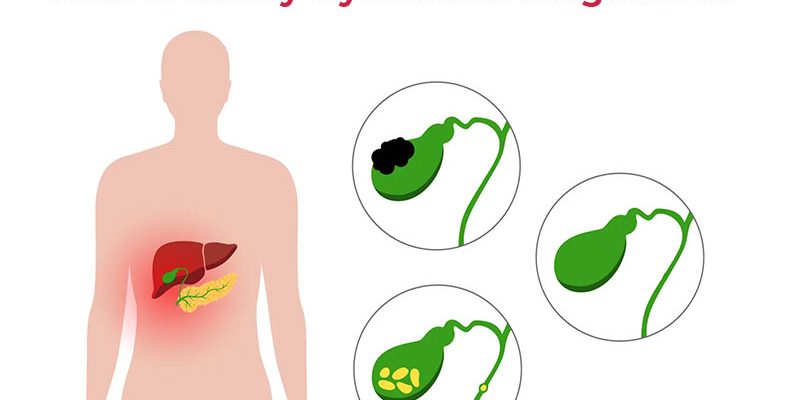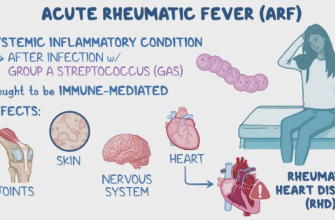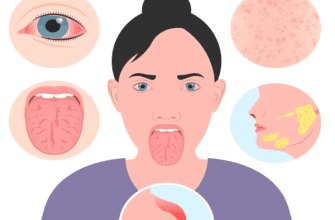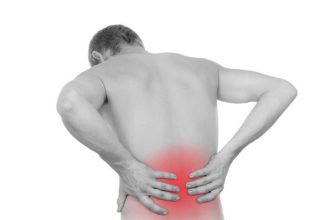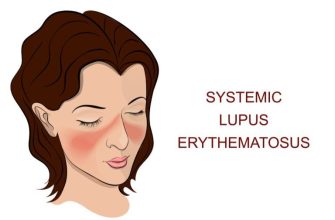Biliary dyskinesia is a functional gallbladder disorder where the gallbladder doesn’t empty bile properly, despite having no stones or structural abnormalities. It causes pain similar to gallstones due to impaired bile flow into the small intestine.
Etiology (Causes & Risk Factors)
The exact cause is unclear, but possible factors include:
✔ Gallbladder muscle dysfunction (poor contraction)
✔ Hormonal imbalances (CCK resistance)
✔ Nerve signaling problems (vagus nerve dysfunction)
✔ Chronic inflammation (low-grade gallbladder irritation)
✔ Risk factors:
- Female gender (more common in women)
- Obesity
- Rapid weight loss
- High-fat diet
Types
- Hypokinetic biliary dyskinesia (most common) – Low gallbladder ejection fraction (GBEF < 35-40%)
- Hyperkinetic biliary dyskinesia (rare) – Overactive gallbladder (GBEF > 80%)
Symptoms
Symptoms mimic gallbladder attacks but without stones:
- Right upper quadrant (RUQ) abdominal pain (persistent or episodic)
- Pain after eating fatty foods (triggered by meals)
- Bloating, nausea, vomiting
- Indigestion & intolerance to fatty foods
- Mild jaundice (rare)
Diagnosis
Since tests for gallstones are negative, diagnosis involves:
- HIDA scan with CCK (measures gallbladder ejection fraction, GBEF)
- GBEF < 35-40% = Hypokinetic dyskinesia
- GBEF > 80% = Hyperkinetic dyskinesia
- Ultrasound or CT scan (rules out stones/tumors)
- Blood tests (liver enzymes, bilirubin – usually normal)
Treatment
1. Lifestyle & Dietary Changes
- Low-fat diet (reduces gallbladder workload)
- Small, frequent meals (prevents overstimulation)
- Avoid trigger foods (fried, greasy, dairy if intolerant)
2. Medications
- Pain relief (NSAIDs, antispasmodics like hyoscyamine)
- Ursodeoxycholic acid (helps bile flow in some cases)
3. Surgery (Cholecystectomy)
- Laparoscopic gallbladder removal (if symptoms persist & GBEF is low)
- Highly effective in 80-90% of cases
Prevention
Since the cause isn’t always clear, prevention focuses on:
✔ Maintaining a healthy weight (avoid rapid weight loss)
✔ Eating balanced, low-fat meals
✔ Staying hydrated
✔ Managing stress (may affect nerve signals)
When to See a Doctor
Seek immediate care if:
- Severe, unrelenting RUQ pain
- Fever/chills (signs of infection)
- Yellow skin/eyes (jaundice)
- Persistent vomiting
Schedule a visit if:
- Recurrent pain after fatty meals
- Chronic bloating/nausea
- Ultrasound shows no stones but pain continues
How to Avoid Worsening Symptoms
- Gradual weight loss (not extreme diets)
- Limit fatty, fried, and processed foods
- Exercise regularly (supports digestion)
- Consider probiotics (may improve gut motility)
Final Note:
Biliary dyskinesia is often misdiagnosed as IBS or acid reflux. If gallbladder pain persists without stones, request a HIDA scan. Surgery often provides long-term relief.
